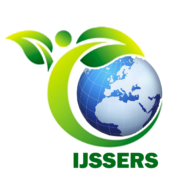Fire Safety Management Strategies in Selected Markets of Lusaka City
This study investigated the effectiveness of fire safety management strategies in selected markets of Lusaka city. The study employed a descriptive research design, which involved qualitative data collection and analysis. The study used purposive sampling to select markets and participants for the study. A total of 2 markets. From each market, 10 marketeers were sampled conveniently. 2 market managers were also sampled purposefully. The study collected data using two main methods: Focus Group Discussions (FGD) and in-depth interviews. The marketeers were interviewed individually and FGD guide was further administered to get more insights. This was meant to collect opinion and insights that could not be collected during interviews. The in-depth interviews were conducted with a subset of the participants to obtain more detailed and nuanced information. The data collected from the in-depth interviews and FGD were analyzed using thematic analysis to identify patterns and themes in the data. The findings of the study indicated that effective fire safety management in markets required a combination of proactive measures and emergency preparedness. Proactive measures included regular risk assessments, proper storage of flammable materials, regular maintenance of electrical systems, and the installation of fire safety equipment such as alarms and sprinklers. Emergency preparedness strategies included the creation of emergency evacuation plans, the establishment of communication protocols, and the training of market staff on fire safety procedures. The study also found that collaboration between market management, vendors, and local fire departments is crucial to effective fire safety management in markets.
The study highlights the need for ongoing education and training for vendors and market staff to maintain awareness of fire safety hazards and emergency response procedures. It also underscores the importance of regular reviews and updates of fire safety management plans to ensure they remain effective and relevant. Overall, the study provides valuable insights into effective fire safety management strategies in markets, and emphasizes the need for continued attention and investment in fire safety management to protect people, property, and businesses from the devastating effects of fires.

